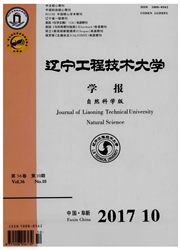

 中文摘要:
中文摘要:
为了有效解决地铁隧道火灾时期烟气流动及其毒性分布对人员疏散的影响问题,以天津地铁区间隧道为研究对象,针对火灾列车停留在隧道中部的火灾工况,利用FLUENT软件,采用简化的PDF燃烧模型、浮力修正的k-ε湍流模型和P-1辐射模型,对不同事故通风方式下隧道内烟气进行数值模拟,并根据烟气的"边界层吸附效应"原理,论证模拟效果。结果表明:不同通风方式对隧道烟气蔓延范围、温度及毒性分布的影响较大;10MW火灾规模时,地铁隧道采用开放式推迟加压的通风方式能够在有效引导烟气流动的同时,为人员提供更充裕的疏散时间。该研究成果对地铁隧道火灾时期通风排烟的有效组织和人员安全疏散具有一定参考价值和指导意义。
 英文摘要:
英文摘要:
The purpose of this paper is to effectively solve the problems concerning the smoke ventilation and toxicity distribution,which would influence the passengers' safe evacuation,during the fire in subway tunnel.The research object is the subway tunnel in Tianjin Metro.According to hypothesis condition in the emergency when the burned subway train stops in the middle of the tunnel,based on the simple PDF combustion model,and the k-e turbulent model and the P-1 radiation model,the simulation models of the smoke exhaust flow status in different ventilation modes are set up with FLUENT software.According to the theory of "Boundary Layer Attachment",the simulation models are proved to be reliable.The paper reveals that different modes of ventilation influence the spreading scope,temperature and toxicity of smoke in the evacuation channels greatly.In 10MW subway tunnel fire,the ventilation by the postponed compression could be used,which can not only efficiently lead the smoke spread but also provide more time in the safe evacuation.The simulation results provide important reference for the choice of the efficient ventilation modes and for human safe evacuation during subway tunnel fire.
 同期刊论文项目
同期刊论文项目
 同项目期刊论文
同项目期刊论文
 期刊信息
期刊信息
